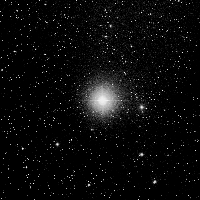Sirrah
|
Double star Sirrah (α Andromedae) |
|||||||||||||||||||||
|---|---|---|---|---|---|---|---|---|---|---|---|---|---|---|---|---|---|---|---|---|---|

|
|||||||||||||||||||||
| AladinLite | |||||||||||||||||||||
|
Observation dates equinox : J2000.0 , epoch : J2000.0 |
|||||||||||||||||||||
| Constellation | Andromeda | ||||||||||||||||||||
| Right ascension | 00 h 08 m 23.26 s | ||||||||||||||||||||
| declination | + 29 ° 05 ′ 25.6 ″ | ||||||||||||||||||||
| Apparent brightness | 2.07 mag | ||||||||||||||||||||
| Typing | |||||||||||||||||||||
| B − V color index | -0.11 | ||||||||||||||||||||
| U − B color index | -0.46 | ||||||||||||||||||||
| R − I index | -0.10 | ||||||||||||||||||||
| Spectral class | B8IVpMnHg or B9p | ||||||||||||||||||||
| Variable star type | α-CVn variable | ||||||||||||||||||||
| Astrometry | |||||||||||||||||||||
| parallax | (33.62 ± 0.35) mas | ||||||||||||||||||||
| distance | (97.0 ± 1.0) ly (29.74 ± 0.31) pc |
||||||||||||||||||||
| Visual absolute brightness M vis | -0.30 mag | ||||||||||||||||||||
| Proper movement | |||||||||||||||||||||
| Rec. Share: | (137.46 ± 0.38) mas / a | ||||||||||||||||||||
| Dec. portion: | (-163.44 ± 0.21) mas / a | ||||||||||||||||||||
| Physical Properties | |||||||||||||||||||||
| radius | 2.7 R ☉ | ||||||||||||||||||||
| Luminosity |
200 L ☉ |
||||||||||||||||||||
| Effective temperature | 13,000 K | ||||||||||||||||||||
| Rotation time | ≈ 22 h | ||||||||||||||||||||
|
Other names and catalog entries |
|||||||||||||||||||||
|
|||||||||||||||||||||
| annotation | |||||||||||||||||||||
|
|||||||||||||||||||||
Sirrah (also Alpheratz , Alpha Andromedae (short α And)) is a spectroscopic double star in the constellation Andromeda . The system is about 100 light years away . The two proper names Sirrah and Alpheratz are based on the Arabic expressionسرة الفرس / sirrat al-faras / 'horse's navel ' back. Sirrah is at the northeast end of the Pegasus Square ( Autumn Square ). In some older star maps, Sirrah is therefore not included in the constellation Andromeda, but in the Pegasus and referred to as δ Pegasi ( Delta Pegasi ). Since the current constellation borders were established in 1930, the designation δ Pegasi is no longer in use.
The IAU Working Group on Star Names (WGSN) defined the proper name Alpheratz as the standardized proper name for this star on June 30, 2016 .
Location in the sky
The bright star is also part of the five-star sequence that leads from Perseus via Andromeda to Beta Pegasi. Together with its southern neighbor star Algenib (γ Pegasi) it marks approximately the "prime meridian" of the starry sky, the meridian with the coordinate value right ascension = zero.
Star physics
Sirrah has an apparent magnitude of +2.07 mag . The star is a blue subgiant of the spectral type B9 and is the apparently brightest member of the mercury-manganese star class . Therefore, the unusual lines of the elements manganese , mercury , gallium and europium show up in its spectrum . Its surface temperature is approx. 13,000 Kelvin and its luminosity exceeds that of the sun by 200 times. It belongs to the class of variable stars of the α Canum Venaticorum type and its apparent magnitude fluctuates between the values 2.02 and 2.06 mag with a period of 23.2 hours.
According to the latest research and calculations, Sirrah has 2.7 times the solar diameter. As a spectroscopic binary star, the main component is orbited by a companion star with a period of 96.7 days.
See also
Web links
Individual evidence
- ↑ bibcode : 1995AJ .... 109..780T
- ↑ a b c Hipparcos catalog (ESA 1997)
- ↑ a b c Bright Star Catalog
- ↑ a b c Hipparcos, the New Reduction (van Leeuwen, 2007)
- ↑ a b Alpheratz. Jim Kaler, accessed September 26, 2018 .
- ↑ Gerardo Inhester: The starry sky in November 2017. Astronomical Working Group Laufen eV, November 1, 2017, accessed on August 30, 2018 .
- ↑ Bulletin of the IAU Working Group on Star Names, No. 1, July 2016. (PDF) Retrieved November 9, 2016 (English, 184 KiB).
